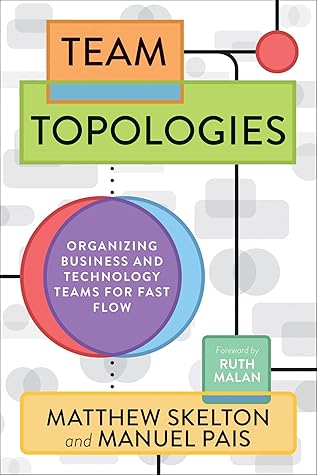More on this book
Community
Kindle Notes & Highlights
Started reading
October 28, 2022
An enabling team is composed of specialists in a given technical (or product) domain, and they help bridge this capability gap. Such teams cross-cut to the stream-aligned teams and have the required bandwidth to research, try out options, and make informed suggestions on adequate tooling, practices, frameworks, and any of the ecosystem choices around the application stack. This allows the stream-aligned team the time to acquire and evolve capabilities without having to invest the associated effort (in our experience, such efforts and their impact on the rest of the team also tend to be
...more
Enabling teams have a strongly collaborative nature; they thrive to understand the problems and shortcomings of stream-aligned teams in order to provide effective guidance. Jutta Eckstein calls them “Technical Consulting Teams,”8 a definition that maps well to what we’d expect a consulting team to provide (guidance, not execution), whether internal or external to the organization.
Enabling teams actively avoid becoming “ivory towers” of knowledge, dictating technical choices for other teams to follow, while helping teams to understand and comply with organization-wide technology constraints. This is akin to the idea of “servant leadership” but applied to team interactions rather than individuals. The end goal of an enabling team is to increase the autonomy of stream-aligned teams by growing their capabilities with a focus on their problems first, not the solutions per se. If an enabling team does its job well, the team that it is helping ...
This highlight has been truncated due to consecutive passage length restrictions.
Use these heuristics from Robert Greenleaf to guide the behavior and drive of the enabling team: “Do those served grow as persons? Do they, while being served, become healthier, wiser, freer, more autonomous?”9
An enabling team proactively seeks to understand the needs of stream-aligned teams, establishing regular checkpoints and jointly agreeing when more collaboration is needed. An enabling team stays ahead of the curve in keeping abreast of new approaches, tooling, and practices in their area of expertise, well before an actual need is expected from stream-aligned teams. In the past, this has been the mission of architecture or innovation teams, but the focus on enabling other teams creates a better dynamic. An enabling team acts as a messenger of both good news (e.g., “There’s a new UI automation
...more
The primary purpose of an enabling team is to help stream-aligned teams deliver working software in a sustainable, responsible way. Enabling teams do not exist to fix problems that arise from poor practices, poor prioritization choices, or poor code quality within stream-aligned teams. Stream-aligned teams should expect to work with enabling teams only for short periods of time (weeks or months) in order to increase their capabilities around a new technology, concept, or approach. After the new skills and understanding have been embedded in the stream-aligned team, the enabling team will stop
...more


